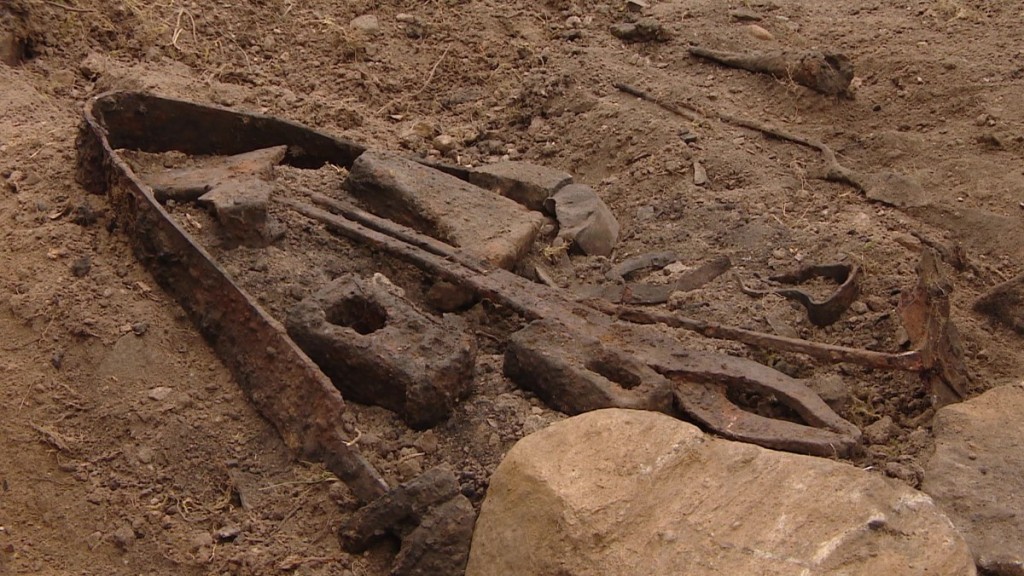
The weapons and tools from the grave Source
The spectacular remains of what appears to be a Viking grave, most likely belonging to a blacksmith, has been uncovered in Sogndalsdalen, Norway (as reported by NRK). The grave was found by Mr Leif Arne Norberg, under a series of stone slabs in his back garden. Mr Norberg had been carrying out landscaping works when he suddenly spotted a blacksmith’s tongs, followed soon afterwards by a bent sword. On closer examination it quickly became apparent that he had stumbled upon a remarkable Viking Age find. Archaeologists from Bergen University and the County’s Cultural Department were called to the scene and the remains were subsequently excavated. The finds recovered from the grave suggest that it probably dates from the 8th or 9th century AD. They included various pieces of metalwork, a tongs, a sword and an axe, all of which will be conserved before being put on display at the University Museum of Bergen. Personally I can’t wait to find out more information about this exciting discovery.

PHOTO: VIDAR GUDVANGEN / NRK (Source)
Related articles